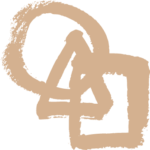Ceramist of the Meiji era. He was born in April 1849 in Hizen Arita, and in 1869, County Ordinance Hyakutake Kanefusa established branches in Kobe and Yokohama in order to export Arita porcelain to foreign countries. He visited and practiced pottery making in Austria, Germany, and France with Notomi Setsujiro, and returned to Japan the following year. Later, he gathered pupils of potters from all over the country at the pottery experiment station in Yamashitamonnai, Tokyo, and taught them European pottery making methods together with Natomi. From this, plaster and machine wheel throwing methods were introduced.
In February 875, he was appointed to the Secretariat of the Exposition, and in July 1876, he was assigned to the Kangyo Ryo, Ministry of Home Affairs. In March 1877, he was assigned to the Ministry of Industry’s Industrial Works Bureau (due to the abolition of the industrial promotion dormitory). At that time, Makoto Shiota, Notomi Sukejiro, and others decided to start the Edogawa Pottery in Ushigome (Shinjuku-ku), Tokyo, and he worked together with them in its operations, but resigned in 1879 (the 2nd year of 1879) to return to Arita and start the Seiko Company with Suminosuke Fukami, Kamenosuke Tezuka, Katsuzo Tsuji, and others, which was later exhibited in Amsterdam, the Netherlands, in 1883 (the 6th year of 1883). On their way back to France via London, they ordered pottery machines in Limoges and returned to Japan the following year. In 1885, he was ordered to be a judge at the Tokyo Cocoon, Silk, Textile, Lacquerware, and Pottery Exhibition, but he became ill and returned home in July of the same year. However, he became seriously ill and died in January 1889 at the age of 41. In fact, he was one of the benefactors of the development of the pottery industry in the Meiji period. (He was one of the benefactors of the development of the pottery industry in the Meiji period. He was born in Edo in 1844 (Koka 1), the son of Sato Jiemon, an official of the shogunate. At the age of 15, he was adopted by Koichiro Kawahara and was ordered to serve as an apprentice to a samurai, and later followed Shogun Iemochi to Kyoto, where he first became interested in pottery. After the revolutionary changes of the Meiji Restoration, he followed the Tokugawa family to the Shizuoka domain, but the domain was abolished and he left for Tokyo in 1871 (Meiji 4), living in Fukagawa (Koto-ku). In the same year, he was assigned to the ceremonial dormitory, and in January of the following year, he joined the Ministry of Home Affairs’ Kangyo Dormitory and became an official at the Austrian Great Exhibition Office, and then moved to the exhibition office. In May of the same year, a ceramics factory was established to improve ceramics and porcelain, and he made great efforts to improve products for export. The factory was supervised by Watanabe Kichiya, his younger brother, and seven painters, who were careful about the four aspects of design, painting materials, painting techniques, and coloring materials, and also painstakingly worked on the preparation, polishing, and firing of the pieces. Many of these products, including vases and incense burners, were exported through the Koritsu Industrial and Commercial Company. After that, he exhibited his works at expositions and symposiums in Japan and abroad, and received countless awards. In 1890, he was awarded the Medal with Blue Ribbon for his achievements, which was probably the first time for a potter to receive this honor. In 1902, he resigned and moved to Kyoto, but remained involved in various expositions and organizations, and was particularly successful in improving export products. He died on August 28, 1914 (Taisho 3) at the age of 70. Hyouikeien moved its factory several times during this period and continued to thrive, but in 1909 (Meiji 42), the factory was closed down and became directly operated by the Nippon Toki Company (Dainippon Ceramics Co. (Dai Nihon Kogyo Kyokai Zasshi, 267, “Short Biography of Kawahara Tokutate O”)








